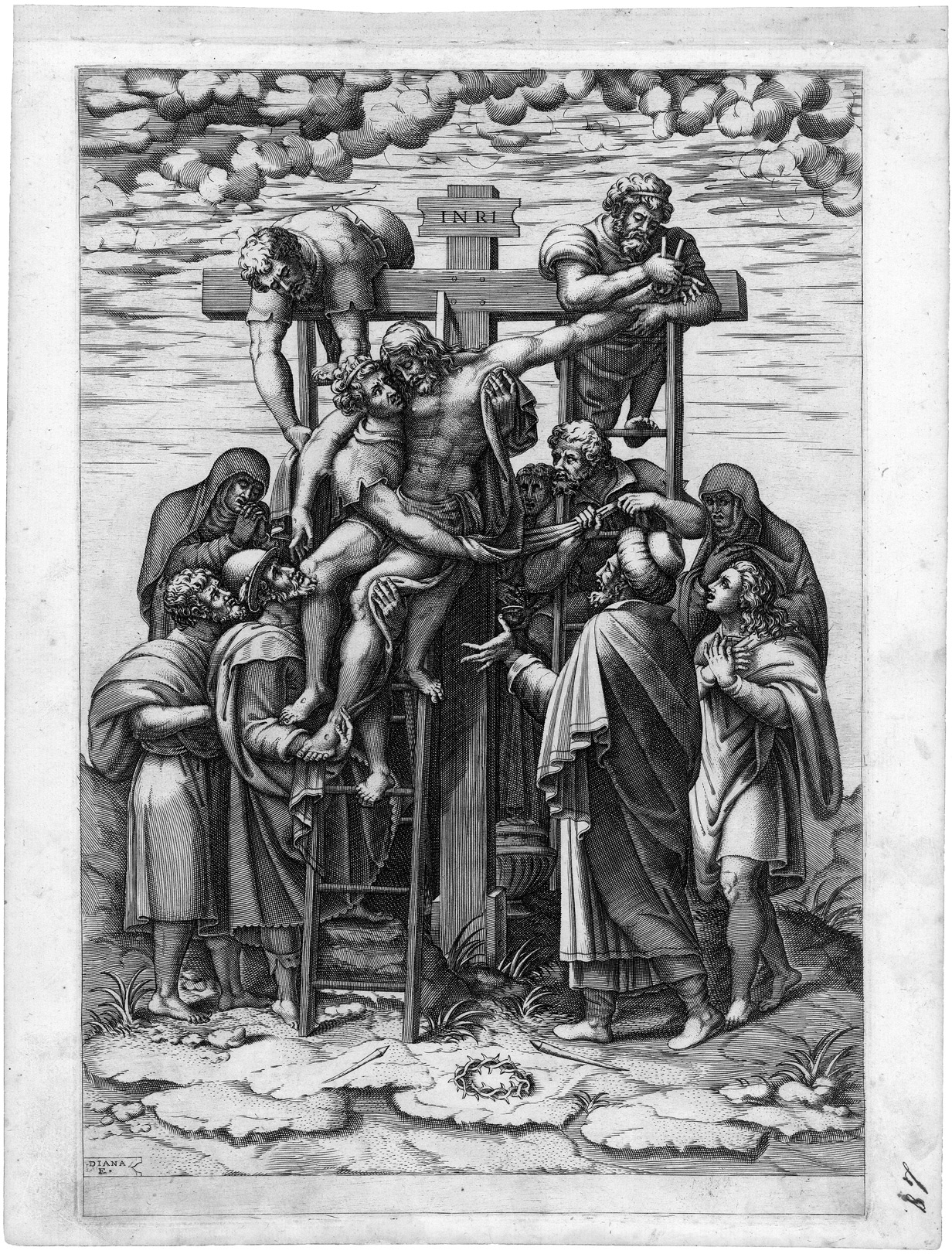Loading the page ...
Diana Scultori
(called Mantovana, ca. 1547 Mantua – 1612 Rome)
The Descent from the Cross. Engraving. 32.7 x 22.1 cm. B. XV, 435,7 I (of II); Massari 1980, 87, 143; Bellini 5 I (of II). Watermark: Pascal lamb in circle (Woodward 47ff, Rome, after 1564).
The engraver Diana Scultori was the daughter of Giovanni Battista Scultori, from whom she learned her craft in her native town of Mantua. Among his other pupils were her brother Adamo Scultori and most probably Giorgio Ghisi too. Diana Scultori’s personality is of historical as well as cultural interest, as she was one of the 16th century’s few female engravers. Diana was the wife of the architect Francesco Capriani, known as da Volterra, who built several sacred buildings in Rome. From about 1575 onwards she worked in Rome where, in recognition of her social status, she received a ten-year papal privilege from Pope Gregory XIII. Entirely dedicated at first to the stylistic principles of the Mantuan school of engraving, she later produced prints in Rome after works by the leading masters of her time, such as Raffaellino da Reggio, Federico Zuccaro, Francesco Parmigianino and Francesco Salviati. The elegance and refinement of the Roman maniera exerted a significant influence on Diana’s art and, as time passed, she developed a more fluid and pleasing style. The present print, however, based on a composition by her father, Giovanni Battista, probably belongs to the artist’s early period. The very disciplined and somewhat static engraving technique is characteristic of her early works. Despite a certain naiveté of draughtsmanship, the scene is imbued with a strong dramatic effect and is devoid of any rhetoric. The figures gathered under the cross show subtle differences in the tenderness and compassion radiating from their gestures and facial expressions. There are fine variations in the play of hands that gently support the limp body of the dead Christ and hold the shroud in which he is taken down from the cross.
A brilliant and sharp early impression with even margins around platemark. Before the change of the address and before the text in the lower white margin. Minimal traces of handling, an old numbering in brown ink in the lower right-hand corner, original binding holes in the upper white margin, otherwise in perfect condition. Bellini mentions just one other impression of this printing state, which is in the Albertina in Vienna. Its beauty and state of preservation make it extremely rare.
